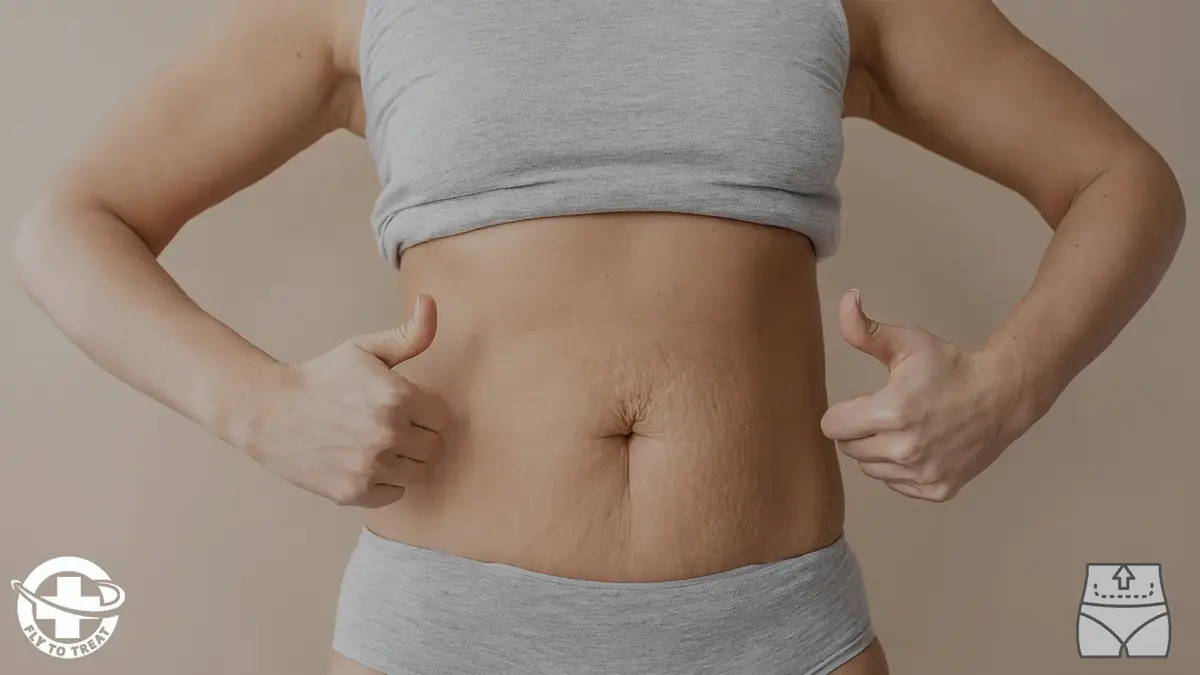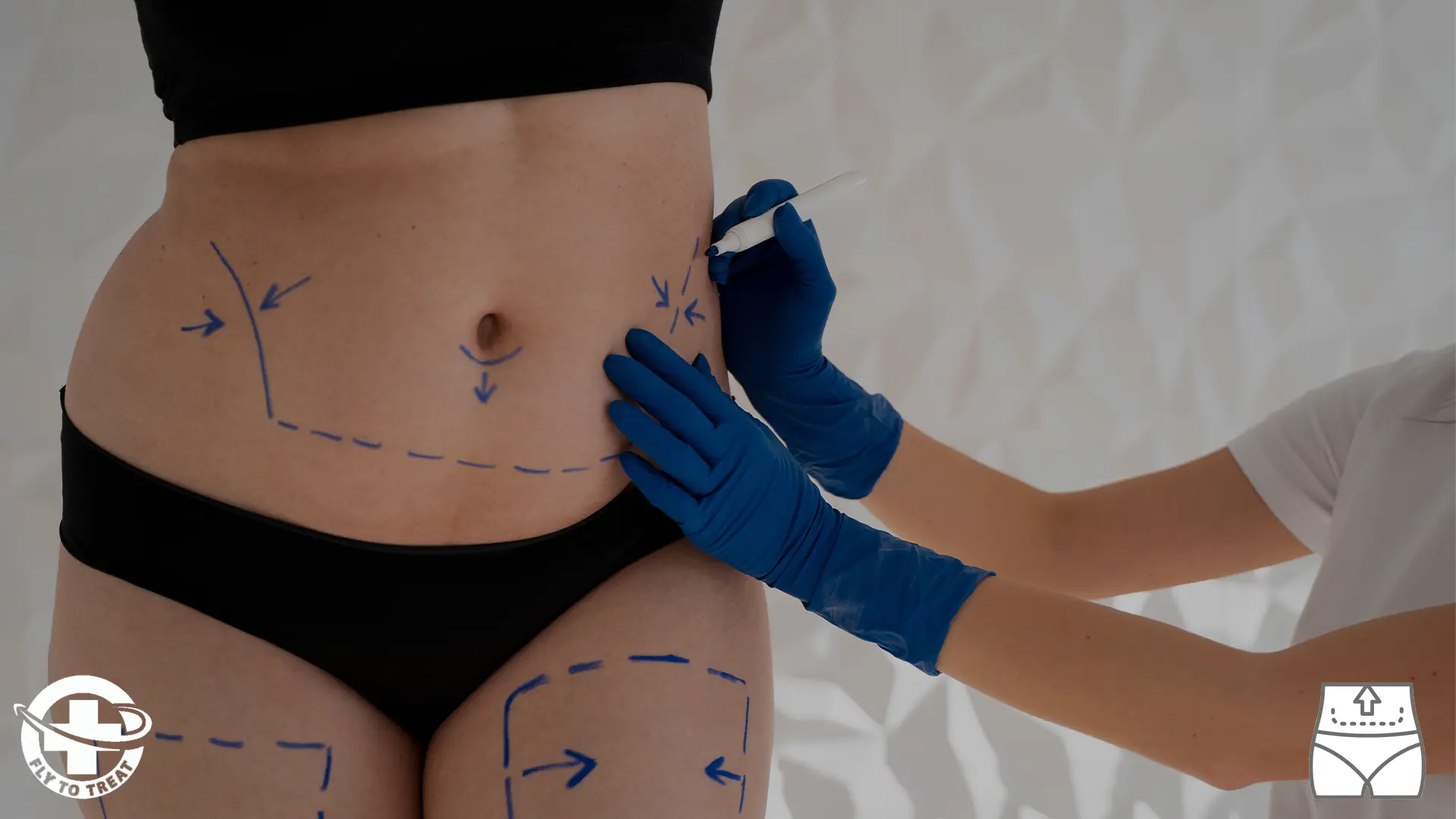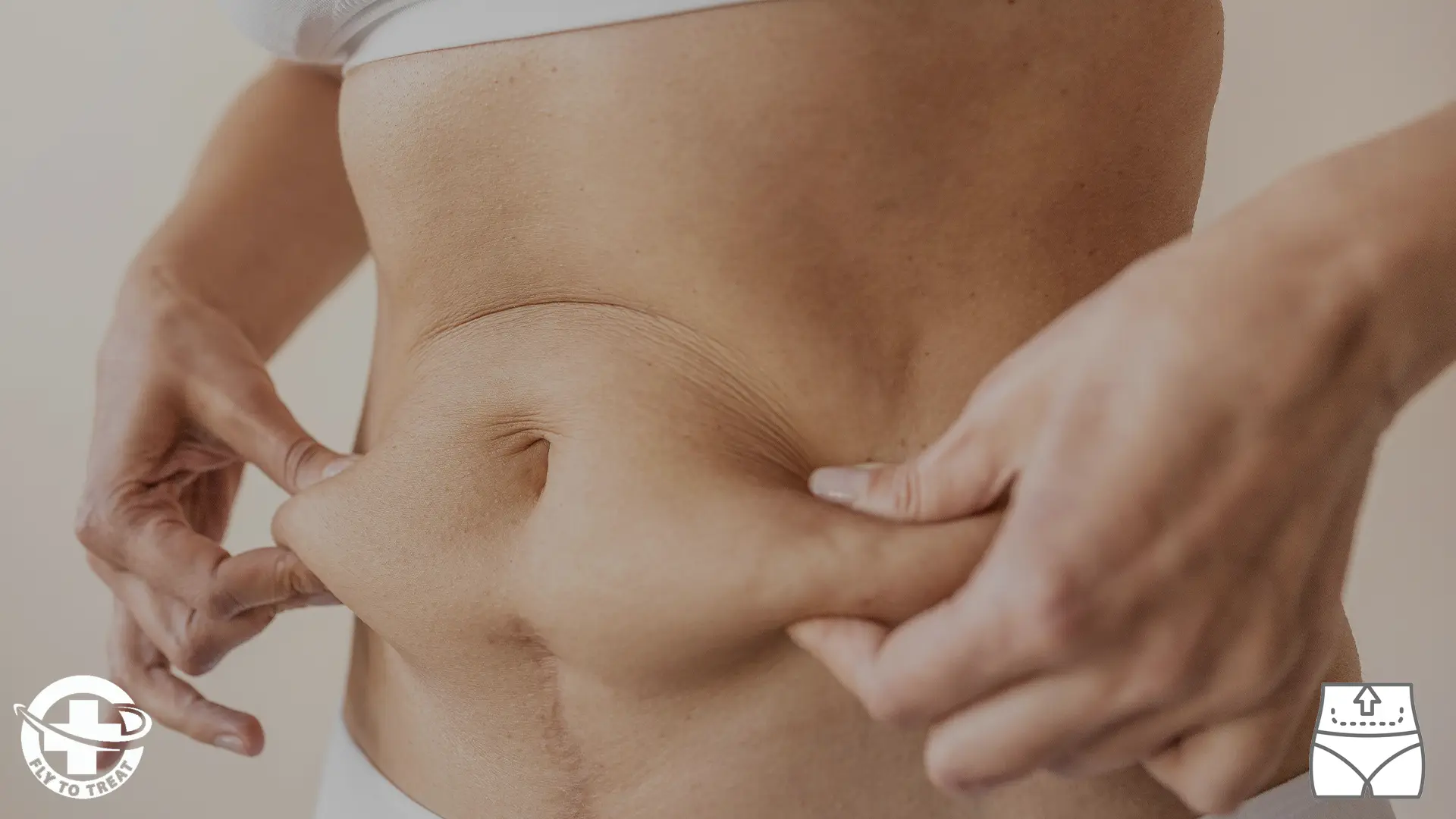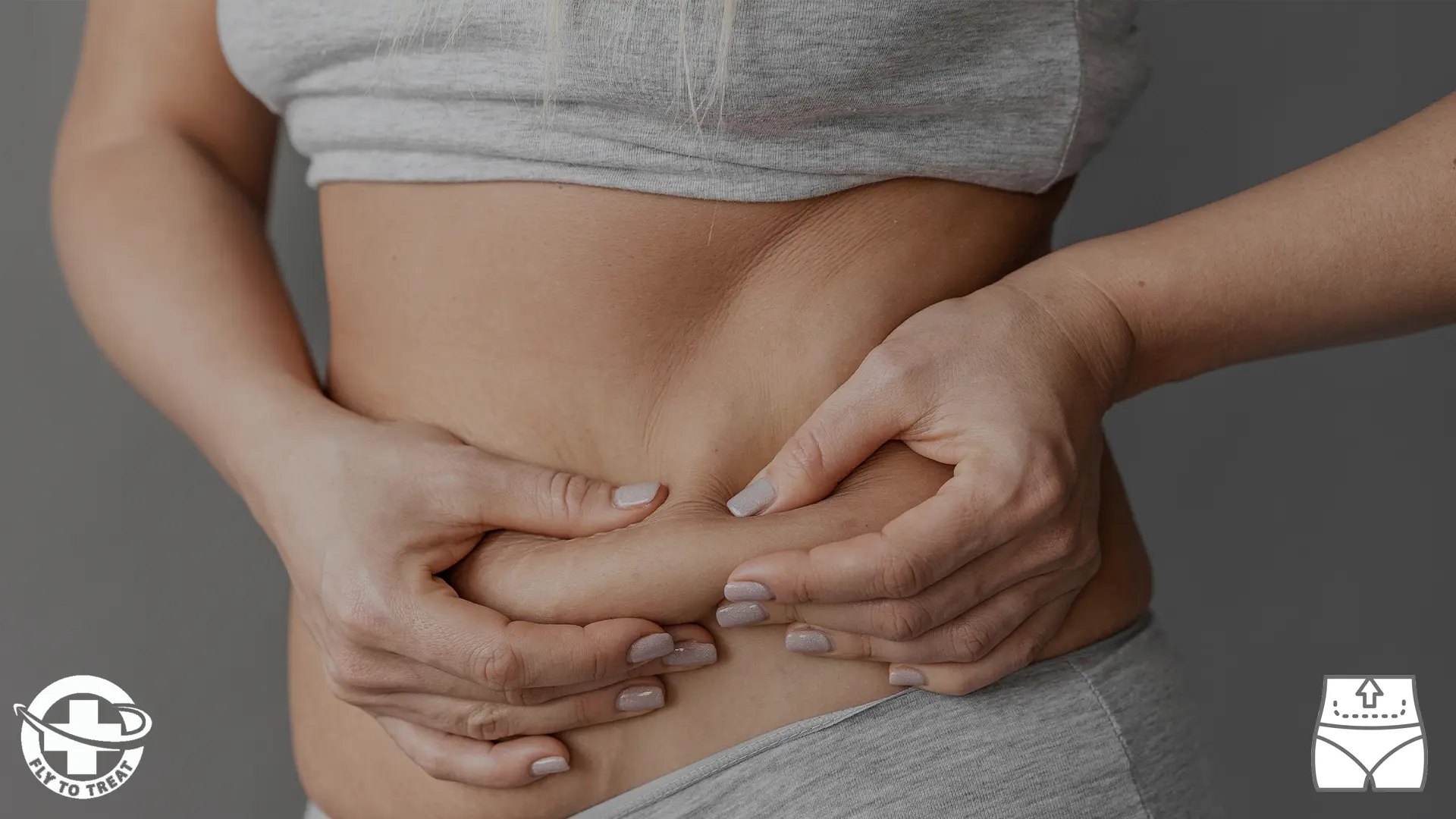
How long tummy tuck recovery?
Understanding the tummy tuck recovery time is crucial for planning a smooth and successful recovery. FlyToTreat provides a detailed guide to help you navigate the healing process, answering questions like "How long tummy tuck recovery?", "What is the tummy tuck recovery week by week?", and "How much time off for tummy tuck?" This article will offer insights into the timeline, essential recovery items, and tips for minimizing downtime while ensuring optimal results.
How long tummy tuck recovery?
Recovery after a tummy tuck typically takes several weeks, depending on the procedure's extent and individual healing. Here's what to expect about tummy tuck recovery week by week:
• First Week: During the first seven days of recovery, you should consume only sugar-free, non-carbonated liquids such as water, clear broth, decaffeinated beverages, and sugar-free drink mixes. You may also have diluted squash, tea, and apple juice. Be sure to avoid carbonated drinks, caffeine, and any beverages with added sugar. After the first week, you can transition to pureed foods for three weeks before gradually moving on to regular foods after about four weeks. Eating too early can strain the healing process and increase the risk of complications, similar to how tummy tuck recovery requires careful adherence to a week-by-week timeline to prevent unnecessary pressure on healing areas. Tummy tuck recovery day by day routines highlight the importance of a cautious approach to prevent issues that could extend the tummy tuck downtime and interfere with your overall recovery plan.
• Weeks 2-4: Swelling gradually reduces, and many return to light activities. Patients often ask, "How long tummy tuck recovery?" The tummy tuck healing timeline varies, but this is a crucial stage.
• Weeks 6-8: By this time, most individuals resume normal activities. However, complete results may not be visible until the swelling subsides.
• Months 3-6: Long-term results are typically seen after this period. It's essential to follow your doctor's advice for a tummy tuck quick recovery and avoid strenuous activities during early recovery stages.
The tummy tuck recovery time can differ based on the procedure and individual factors. Proper post-op care, rest, and the right tummy tuck recovery items can make the process smoother.
Tummy Tuck recovery time off work
Tummy tuck recovery time off work depends on the extent of the procedure and individual healing rates. Most patients take about 2-4 weeks off after a full tummy tuck to avouch proper recovery. Mini tummy tuck time off work may be shorter, around 1-2 weeks.
• Week 1: Initial tummy tuck healing time requires rest and limited mobility.
• Weeks 2-4: Many return to desk jobs, but those with physically demanding jobs may need additional time off.
It's essential to follow a tummy tuck recovery timeline to avoid complications and support proper healing. Returning to work too soon can slow progress, so it's vital to listen to your body and surgeon's advice. Most patients see substantial improvement by the fourth week and can resume normal activities gradually. Planning for the appropriate tummy tuck recovery time off work is crucial for a smooth recovery.
Here you can see How many different types of tummy tucks are there?
Tummy Tuck recovery items
Preparing for a smooth recovery after a tummy tuck involves gathering essential tummy tuck recovery items. Here's a list of must-haves to ease your tummy tuck healing time:
• Compression garments: You'll need to wear these for several weeks to reduce swelling and pass the tummy tuck healing time.
• Comfortable clothes: Loose-fitting clothing like soft robes and sweatpants will keep you comfortable during the initial recovery phase.
• Hydration: Drinking plenty of water aids healing in tummy tuck recovery time, but avoid alcohol and acidic beverages .
• Medications: Pain relief and antibiotics will be essential. Some may also take supplements like Arnica to help reduce bruising.
• Other supplies: Items such as a toilet seat booster, ice packs, no-slip socks, and a neck pillow can significantly improve comfort. Keep extra gauze for wound care and ensure a reliable driver post-surgery.
Proper preparation with these tummy tuck recovery must haves will help ensure a smoother recovery timeline, allowing you to focus on healing effectively.
What do I need to buy for tummy tuck recovery?
For a smooth tummy tuck recovery, here are essential items you should have:
• Compression garments to reduce swelling and support healing.
• Abdominal binders to help maintain the surgical area.
• Prescribed pain medications for managing discomfort.
• Scar treatments to minimize scarring.
• Pillows for added comfort while resting.
• High-protein snacks to promote healing.
Following these tummy tuck recovery day by day necessities can prevent complications like infection or blood clots, ensuring a shorter tummy tuck downtime and a more predictable tummy tuck healing timeline.
What should I put on after tummy tuck?
After your tummy tuck, you should wear a compression garment to reduce swelling and support your abdomen. This garment is essential during the early stages of recovery, helping improve circulation and promoting healing. Loose, comfortable clothing is recommended to avoid irritation. The compression garment is a key part of your tummy tuck recovery timeline, and wearing it consistently can shorten your tummy tuck downtime. Following these guidelines helps ensure a smoother recovery and aligns with your tummy tuck healing timeline.
How painful is a tummy tuck recovery?
Tummy tuck recovery involves managing pain, which typically decreases over time. During the first week, pain can be pretty intense, but this is part of the tummy tuck healing timeline. Most patients feel the most tremendous discomfort in the first few days, especially while moving or sitting upright. Pain management options, including prescribed medications, help to ease this period. As the weeks progress, the intensity of pain diminishes, and you will notice significant improvement. By the third or fourth week, many find the discomfort has subsided considerably, though some tenderness might linger. The tummy tuck recovery timeline varies from person to person, but most report steady relief as the body heals. By six weeks, many patients are more comfortable, though they must continue to take precautions to protect the surgical area. Understanding the body's healing process can help alleviate concerns and ensure a smoother recovery experience during the tummy tuck recovery week by week.
You can dig deeper about What exactly is done during a tummy tuck?
How long after tummy tuck do you look normal?
After a tummy tuck, it can take several months before you look "normal" again, as swelling is a standard part of the recovery process. During the first few weeks, swelling can obscure the final results. Still, the tummy tuck healing time typically reduces this over the next 6 to 12 weeks. Most patients notice a significant improvement in their appearance after about three months. However, for some, it may take six months to a year to fully see the outcome as the body adjusts and heals completely. Pain and tightness are joint in the initial recovery, but they decrease over time as the swelling subsides. Adhering to your surgeon's advice about tummy tuck recovery items and care can help speed up the process. Patients typically begin feeling more like themselves after the first few months. However, full recovery varies from person to person based on individual tummy tuck healing timelines.
How long does it take for a tummy tuck wound to close?
After a tummy tuck, the wound typically starts to close within two to three weeks. During this initial period, you may feel some discomfort and tightness. Still, these symptoms usually diminish as the tummy tuck recovery timeline progresses. By six weeks, the incision is generally well-healed, though it may still appear red or raised. The tummy tuck healing time can vary depending on your body and how well you care for the wound, with the final appearance of the scar taking up to a year to fade fully. It's crucial to follow your surgeon's instructions, use tummy tuck recovery items like compression garments, and avoid strenuous activities during the healing phase. As the tummy tuck recovery week by week unfolds, the pain will reduce, and the scar will begin to soften and flatten. Patience is key, as everyone's healing journey is unique, and the tummy tuck healing timeline differs from person to person.
Warning signs after tummy tuck
After a tummy tuck, it's crucial to be vigilant about any warning signs that could indicate complications during your tummy tuck recovery time. Key symptoms to watch for include:
• Persistent or worsening swelling or redness around the incision site. While some swelling is normal, a significant increase may signal an infection or delayed wound healing, affecting your tummy tuck healing timeline.
• Severe pain that doesn't improve with prescribed pain medication. Pain should gradually decrease over time according to the tummy tuck recovery timeline, so increasing discomfort could be a concern.
• Fluid buildup or noticeable lumps under the skin, which may indicate a seroma (fluid accumulation) or hematoma (blood collection) that could interfere with a quick tummy tuck recovery.
• Fever or chills, common indicators of an infection that require prompt medical attention to avoid complications during your tummy tuck downtime.
• Unusual bleeding from the incision site or slow healing, which can impact your overall tummy tuck recovery week by week.
• Shortness of breath, chest pain, or leg swelling, as these could be symptoms of a blood clot, a serious complication that needs immediate care and can prolong your tummy tuck recovery time off work.
• Poor scar formation or uneven contours, which may suggest issues with healing or the surgical procedure, affecting the final results and your tummy tuck healing timeline.
If you experience any of these symptoms during your tummy tuck recovery time, contact your surgeon immediately to ensure a smooth and safe healing process.
Am I a Good Candidate for tummy tuck?
To be a good candidate for a tummy tuck, you should generally be in good health, maintain a stable weight, and have realistic expectations about the results. It's ideal if you're near your target weight, as significant weight fluctuations after surgery can affect the outcome. Additionally, individuals considering a tummy tuck should not plan on having more children, as pregnancy can reverse the effects of the procedure.
Good candidates often have excess skin and weakened abdominal muscles due to factors like pregnancy, ageing, or weight loss. If diet and exercise alone can't achieve the desired abdominal contour, a tummy tuck might be a suitable solution. Candidates should also be able to commit to the necessary tummy tuck recovery time, including taking time off work and following post-operative care instructions to ensure optimal healing.
Ultimately, discussing your medical history and goals with a board-certified surgeon is essential to determine if you're the right candidate for a tummy tuck and to plan your tummy tuck recovery timeline accordingly. Feel free to click the link to see Who should not get a tummy tuck?
Conclusion
In conclusion, managing your tummy tuck recovery time effectively is vital to achieving the best results. FlyToTreat emphasizes the importance of following your surgeon's guidelines, using recommended recovery items, and allowing adequate time off work to heal properly. By understanding the recovery timeline and addressing any concerns early, such as pain or swelling, you can ensure a quicker and smoother recovery, ultimately leading to a more successful outcome.
MEDICALLY REVIEWED BY: Dr. Ali Bazazi
AUTHOR: FlytoTreat's team of Authors
15 September 2024 - Updated At: 06 January 2025
Related Articles
Comment








